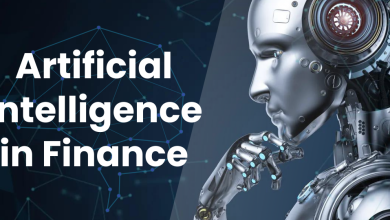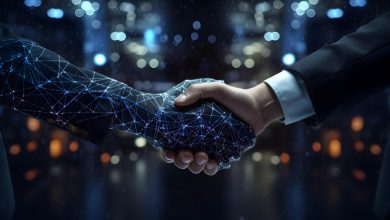
Data Isn’t the Hard Part — Interpreting It Is
In freight and supply chain, we don’t suffer from a lack of data. Rates, tariffs, inflation numbers, tender rejections, and capacity utilization — the numbers are everywhere. The real challenge is knowing what they mean and how to act on them. As I often say, “the devil’s in the details”.
Artificial intelligence has given us more tools than ever to process those details. But AI alone isn’t a strategy. The future of work is about how people and AI collaborate. How teams are equipped to interpret machine-generated insights and translate them into better decisions.
Why Context Still Matters
Over the past year, we’ve seen steep drops in pricing, rising wage inflation, shifting tariff policies, and unpredictable consumer behavior. Spot rates may look stable, but when trucks and containers are being used as makeshift storage, the hidden costs mount quickly. Tariffs spark stockpiling, and that inventory ties up both warehouse space and transportation assets.
AI can detect these anomalies instantly and show us where inventory is piling up or forecast shifts in demand. But what it can’t do is weigh the full context. It doesn’t negotiate contracts or anticipate how a Fed rate decision will ripple through multi-year agreements. That’s where human expertise remains irreplaceable.
How AI Changes the Work We Do
AI doesn’t remove complexity. It does, however, do a great job in interpreting patterns and learning how to interpret those patterns through “training”. The more training, the more accurate the predictions. For freight teams, this means moving from simply collecting data to interpreting data and applying it with precision.
Three ways I see this playing out in logistics and beyond:
1. Market Intelligence
- Inflation expectations, along with other market conditions, get “baked in” to carrier pricing. AI can flag these trends, but it takes skilled procurement teams to use that knowledge as leverage in contract negotiations.
2. Operational Awareness
- AI can predict when tariffs or capacity swings may strain the system. But humans must evaluate when to hedge with inventory, when to burn it off, and when the cost of guessing outweighs the cost of action.
3. Strategic Agility
- Algorithms point to rate-of-change as much as direction-of-change. A spike in inventory signals something very different than a gradual trend. Leaders need to read those “tea leaves” and decide whether to hold firm or adjust course.
Upskilling: The Critical Shift
For AI to truly transform work, companies need to invest not only in the technology enablement but also in their people. This isn’t a question of replacement. It’s about giving teams the tools to work alongside AI and use their time more wisely to meet corporate objectives.
That means teaching teams to:
- Validate machine insights against real-world conditions.
- Ask better questions of the data: What’s noise? What’s meaningful?
- Build confidence in applying AI-generated insights to strategy, not just reporting.
Without this shift, companies risk falling into “black box thinking,” where teams accept machine outputs without context. And in freight, that’s costly. Guessing is expensive.
Beyond Logistics, Across Industries
The pressure to adapt isn’t limited to freight. Manufacturing companies are teaching line managers how to interpret AI-driven maintenance alerts. Financial firms are training compliance teams to work with anomaly detection models. Even healthcare systems are showing staff how to question AI diagnoses instead of accepting them at face value.
In each case, the principle is the same: AI provides the signal, but people bring the context. If teams don’t have the confidence or skills to challenge machine outputs, the risk of costly missteps only grows. Logistics may be the proving ground, but this need for reskilling is playing out across every industry that relies on data.
Human Judgment + AI Clarity = Competitive Advantage
The freight market provides insight into a larger point about the future of work. AI will continue to get faster and more sophisticated, but its role is to accelerate clarity, not to replace human decision-making.
When people and AI collaborate, companies get the best of both:
- Machines surface patterns and predict outcomes at scale.
- Humans bring judgment, negotiation skills, and context that numbers alone can’t capture.
The companies that thrive will be those that recognize AI as a partner, not a replacement, and invest just as heavily in their workforce as they do in technology.
What Leaders Can Do Today
So what should leaders do to prepare their teams for this future? A few steps stand out:
- Invest in data literacy and accuracy. Everyone — not just analysts — should understand the basics of how AI models surface patterns and where bias or blind spots might appear. And remember, garbage in and garbage out. AI can’t replace having accurate and timely data.
- Encourage cross-functional collaboration. Pair operations staff with data teams so insights are tested against real-world realities before decisions are made. Use practical applications where the data is available, but the information derived is harder to visualize and/or cumbersome to transform into information.
- Use AI for scenario planning. Train teams to run “what if” simulations with AI tools, then interpret the results to guide negotiations, strategy, and customer commitments.
- Focus on trust and transparency. Employees are more likely to embrace AI when they see how it supports their expertise rather than undermines it.
These aren’t one-time initiatives. They’re cultural shifts. And the companies that weave these steps into daily operations will be the ones that see lasting impact from AI.
The Human Edge in an AI World
Supply chains don’t run on data points; they run on decisions. AI sharpens the data, but people turn it into a strategy. The future of work isn’t AI versus humans. It’s about building teams that can interpret, collaborate, and make the right move in the “chess game” of global commerce.
Because in this market, the details matter. And those who can connect AI’s speed with human expertise will be the ones who win.




